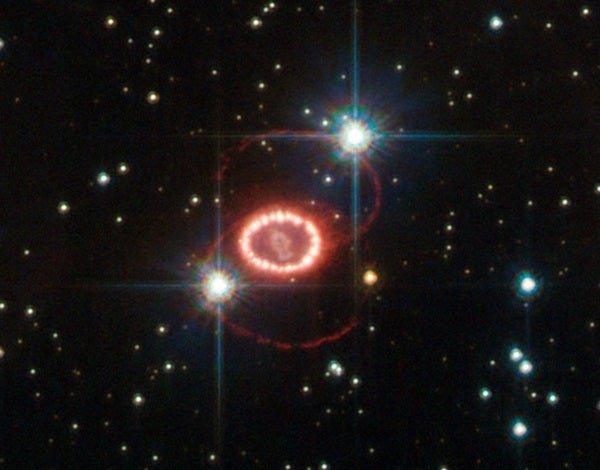Almost 30 years ago, astronomers and the public saw the closest and brightest modern supernova ever seen by humanity, now known as supernova remnant SN 1987A. Today, researchers paint a picture of the star’s life long before its death.
Using the Murchison Widefield Array (MWA) placed in the remote area of the Australian outback, astronomers are able to look into the past of a certain star millions of years before its infamous explosion.
Researchers at the University of Sydney and an international team of astronomers have used the lowest-ever radio frequencies to piece together our understanding of stellar explosions, and specifically that of SN 1987A. The results are published in the Monthly Notices of the Royal Astronomical Society.
By studying the cosmic ruins of the star’s collapse in 1987, astronomers could observe much of the immediate past of this star. The explosion occurred in our neighboring satellite galaxy, the Large Magellanic Cloud. The supernova is located about 168,000 light years away, meaning the event happened that long ago. Only that last 20,000 years or about 0.1 percent of the star’s total lifespan had been observable.
The newest insights have been found from the faintest of “hisses” through low-frequency astronomy. This research has enabled astronomers to look back at the supernova’s life millions of years further back than previously possible. A PhD candidate at the University of Sydney and ARC Centre of Excellence for All-Sky Astrophysics (CAASTRO), Joseph Callingham, led the study under Bryan Gaensler.
The radio astronomers were able to look back to when the star was in its red supergiant phase operating the MWA in the West Australian desert. Previous studies have focused on the star’s final blue supergiant phase.
“Just like excavating and studying ancient ruins that teach us about the life of a past civilisation, my colleagues and I have used low-frequency radio observations as a window into the star’s life,” says Callingham in a press release.
It was found that the red supergiant lost matter at a slower rate and created slower stellar winds than was previously thought.
“Our new data improves our knowledge of the composition of space in the region of supernova 1987A; we can now go back to our simulations and tweak them, to better reconstruct the physics of supernova explosions,” says Callingham.
The placement of the radio telescope far away from any FM signals was the key to gaining this new knowledge said Gaensler.
“Nobody knew what was happening at low radio frequencies, because the signals from our own earthbound FM radio drown out the faint signals from space,” says Gaensler. “Now, by studying the strength of the radio signal, astronomers for the first time can calculate how dense the surrounding gas is, and thus understand the environment of the star before it died.”
In a video made by CAASTRO, the star’s past and explosion are shown. Watch the video below.










